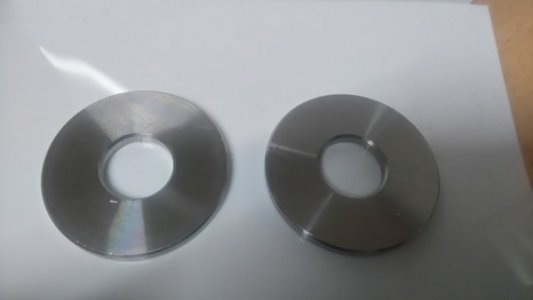I've made parts like this. Assuming you are seeking bit more dimensional control than a shiny puck, I would:
- chuck the rough stock (here again, if you want 2.00" then are you starting with 2.25" or starting with 2" and 1.98" is fine?)
- turn the OD & turn the face. Machine any corner chamfer. Now you have 2 good surfaces established
- a) part the segment say .025" oversize if you have appropriate parting tooling but that's getting to be a reach for most hobby equipment, b) just hacksaw it off
- holding the piece rigidly & accurately to machine the back face looks simple enough but you need to be aware of not a lot of grip area between chuck jaws. I would use spacers between the machined face & chuck body. I've used MDF for this which is surprisingly accurate. Take light cuts until you achieve your 0.25" finished width & ,matching chamfer as necessary.
Another option is to glue the disk to a sacrificial blank which has been machined true in-situ. Use CA glue, allow to fully cure, then again just light cuts (like 0.010" per pass). When done, remove the assembly & release the glue just apply gentle heat with a torch. Check out Clickspring YouTube videos, he does a lot of this. I had several washer like parts to make & this technique came in handy.

